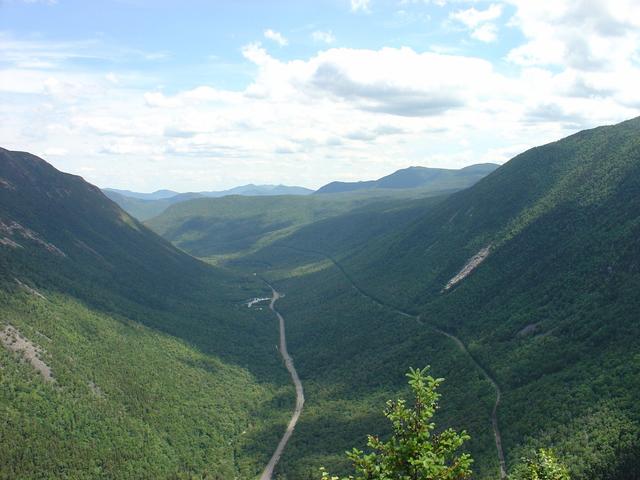Home » Regions » North America » Northern Forests » Atlantic Highlands » Northeastern Highlands » White Mountains/Blue Mountains
White Mountains/Blue Mountains
Last updated: September 1st, 2020
Page contents
↑About the White Mountains/Blue Mountains
The White Mountains/Blue Mountains are a region stretching from northeastern New Hampshire into western Maine, significantly wider in New Hampshire. This is one of the most rugged regions in all of New England. The highest elevations are separated into the Upper Montane/Alpine Zone; this region includes elevations up to 3,475 feet, but the highest point, Mount Washington, reaches 6,288 feet.This region is mountainous, ranging from low mountains to the highest elevations in the northeast. The mountains are glaciated and deeply dissected, with steep slopes and narrow valleys. There are few lakes, with lakes totally absent from much of the region. Underlying geology is diverse, with many types of granite, and some sedimentary, metasedimentary, and metavolcanic rocks. Some thin and discontinuous sandy and sandy-loamy glacial till is found, but bedrock outcroppings are common.
This region was mostly covered with northern hardwood forests, dominated by sugar maple (Acer saccharum), American beech (Fagus grandifolia), and yellow birch (Betula alleghaniensis). Lower elevations featured hemlock-beech-red oak-white pine forests,and also hemlock forests with eastern hemlock (Tsuga canadensis), red spruce (Picea rubens), northern red oak (Quercus rubra), and red maple (Acer rubrum). Higher elevations featured subalpine balsam fir-birch forest, and there were a few areas of spruce-fir and other subalpine communities, although most of these areas are within the separate upper montane/alpine zone.
This area is covered almost entirely in forest. Land use includes recreation, tourism, hunting and fishing, and forestry. There is significant protected public land here. White Mountain National Forest almost completely covers the western portion of this region, even extending outside of it at places. This region is sparsely populated, although there are small towns throughout, many focused on tourism.
To the west and southwest, this region is bordered by the White Mountain Foothills. The western portion of this region is bordered to the south by the Sebago-Ossipee Hills and Plains; in the east, it is bordered to the southeast by the Western Maine Foothills. The entire region is bordered to the north by the slightly lower-elevation but colder Quebec/New England Boundary Mountains.
 This photo shows the Crawford Notch, a pass in the White Mountains in New Hampshire, showing the forested landscape with steep-walled U-shaped valleys cut by glaciers. Note the complete absence of lakes or ponds in the landscape. Photo © christopdesoto (Flickr), CC BY 2.0, Source.
This photo shows the Crawford Notch, a pass in the White Mountains in New Hampshire, showing the forested landscape with steep-walled U-shaped valleys cut by glaciers. Note the complete absence of lakes or ponds in the landscape. Photo © christopdesoto (Flickr), CC BY 2.0, Source.Plant Lists & In-Region Search
We do not yet have data to generate plant lists for a region as fine-tuned as this one. However you can move up to the broader Northeastern Highlands and generate lists for that region: native plants or all plants. Or search that region's plants here:
↑References
1. Griffith, G.E., Omernik, J.M., Bryce, S.A., Royte, J., Hoar, W.D., Homer, J.W., Keirstead, D., Metzler, K.J., and Hellyer, G. "Ecoregions of New England (Poster)", U.S. Geological Survey (2009) Web.


